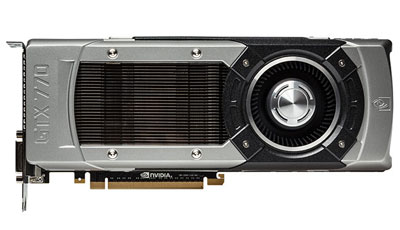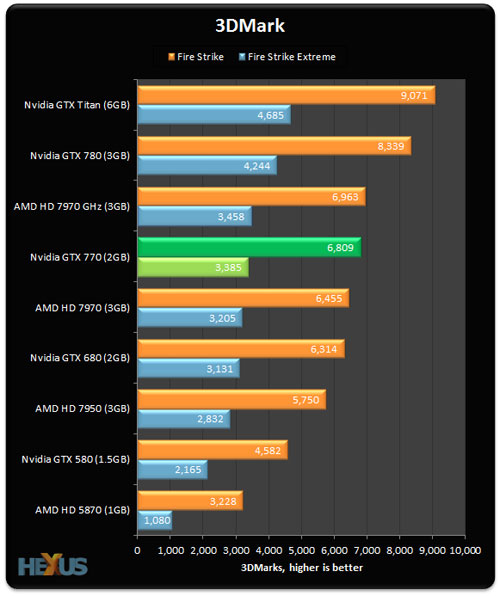Our Aim
To provide you with an overview on New And existing technologies, hopefully helping you understand the changes in the technology. Together with the overviews we hope to bring topical issues to light from a series of independent reviewers saving you the time And hassle of fact finding over the web.
We will over time provide you with quality content which you can browse and subscribe to at your leisure.
TekSpek 's

NVIDIA GeForce GTX 770
Date issued:
Nvidia has tempted the moneyed enthusiast by launching two ultra-high-end cards this year. We first saw the Titan in February, followed by the GTX 780 just last week. These GPUs share a 7.1-billion-transistor die and are derived from the architecture powering the latest workstation Tesla cards. They're big, beefy and powerful, but at over £500 they're most probably too rich for most folk.

The firm's previous single-GPU graphics champ, GTX 680, has been around for over a year and Nvidia wants further 7-series cards in addition to the GTX 780. But how to do this when the next-generation architecture, codenamed Maxwell, is slated for 2014? Well, we know that GTX 780 builds on Titan's blueprint, but it's an expensive-to-produce GPU that's hard to scale down to lower price points.
Nvidia is solving this conundrum by introducing GeForce GTX 770 - a GPU that borrows the architecture found on the venerable GTX 680.
Going By The Numbers
In the below table, pay close attention to the GTX 770 and GTX 680 columns. Both GPUs use the same Kepler architecture, encompassing 1,536 shaders, 32 ROPs and a 256-bit memory bus. The basic blueprint, then, is the same, but, as always, the devil is in the details.
| GPU | GeForce GTX TITAN (6,144MB) | GeForce GTX 780 (3,072MB) | GeForce GTX 770 (2,048MB) | GeForce GTX 680 (2,048MB) | Radeon HD 7970 GHz (3,072MB) |
|---|---|---|---|---|---|
| Launch date | February 2013 | May 2013 | May 2013 | March 2012 | June 2012 |
| DX API | 11.1 | 11.1 | 11.1 | 11.1 | 11.1 |
| Process | 28nm | 28nm | 28nm | 28nm | 28nm |
| Transistors | 7.1bn | 7.1bn | 3.54bn | 3.54bn | 4.3bn |
| Approx Die Size | 551mm² | 551mm² | 294mm² | 294mm² | 352mm² |
| Processors | 2,688 | 2,304 | 1,536 | 1,536 | 2,048 |
| GPU Boost | v2.0 | v2.0 | v2.0 | v1.0 | AMD-specific |
| Texture Units | 224 | 192 | 128 | 128 | 128 |
| ROP Units | 48 | 48 | 32 | 32 | 32 |
| GPU Clock/Boost (MHz) | 837 (876) | 863 (902) |
1,046 (1,085) | 1,006 (1,058) | 1,000 (1,050) |
| Shader Clock/Boost (MHz) | 836 (876) | 863 (902) |
1,046 (1,085) | 1,006 (1,058) | 1,000 (1,050) |
| GFLOPS | 4,494 | 3,977 | 3,213 | 3,090 | 4,096 |
| Memory Clock (MHz) | 6,008 | 6,008 | 7,010 | 6,008 | 6,000 |
| Memory Bus (bits) | 384 | 384 | 256 | 256 | 384 |
| Max bandwidth (GB/s) | 288.4 | 288.4 | 224.3 | 192.2 | 288 |
| Power Connectors | 8+6 | 8+6 | 8+6 | 6+6 | 8+6 |
| TDP (watts) | 250 | 250 | 230 | 195 | 250 |
| GFLOPS per watt | 17.98 | 15.85 | 13.97 | 15.84 | 16.38 |
| Current price | $999 | $649 | $399 | $449 | $449 |
The year or so since the GTX 680's launch has provided Nvidia and its manufacturing partner, TSMC, enough time to fine-tune the engineering process enough to tease out higher frequencies from the GK104 silicon; achieving loftier clocks during maturation is common for cutting-edge technology. Nvidia now feels comfortable in releasing the reference GTX 770 GPU with a core speed of 1,046MHz, rising to an average of 1,085MHz under load, and this represents a measurable gain over GTX 680.
One of the reasons why we believe the GTX 770 will run faster than Nvidia's own conservative 1,046/1,085MHz clock is down to implementing GPU Boost v2.0 for the new card. The more-granular approach to frequency and voltage is sure to pay dividends when the card is pushed.
A jump on the core alone isn't enough for the new GeForce GTX 770, so Nvidia has also upgraded the GDDR5 memory, too. The new card ships with 7Gbps modules as standard, up from the already-fast 6Gbps on the GTX 680/780/Titan, and this leads to a 17 per cent hike in available bandwidth.
Faster memory certainly burns through more power, so the increase in TDP over GTX 680 - 230W vs. 195W - doesn't come as a huge surprise.
How fast will it be?
The GTX 770 can quite legitimately be thought of as an overclocked GTX 680 GPU - most probably using the exact core - that is fed by the fastest GDDR5 we've ever seen. Think of it as an ultra-clocked GTX 680 and you're pretty much on the money.

Benchmarks from leading publications reveal that a reference GeForce GTX 770 is, on average, up to 10 per cent faster than the GeForce GTX 680, while being priced more competitively at $399 (roughly £330, inc. VAT). Of course, add-in board partners are likely to run their respective GTX 770 OC editions at much higher speeds, leading to even larger performance gains.
Summary
GeForce GTX 770 is a higher-clocked version of the GTX 680, presented in a tidier package and imbued with the latest GPU Boost technology. Priced from £330, it is shaping up to be one of the most competitive high-end single-GPU solutions on the market today and will trade blows with the outgoing GeForce GTX 680 and AMD's rival Radeon HD 7970 GHz Edition. Partner-overclocked variants of all three solutions will be vying for the sub-£400 performance crown, and, as always, a wide variety of cards will be available to order from Scan Computers.